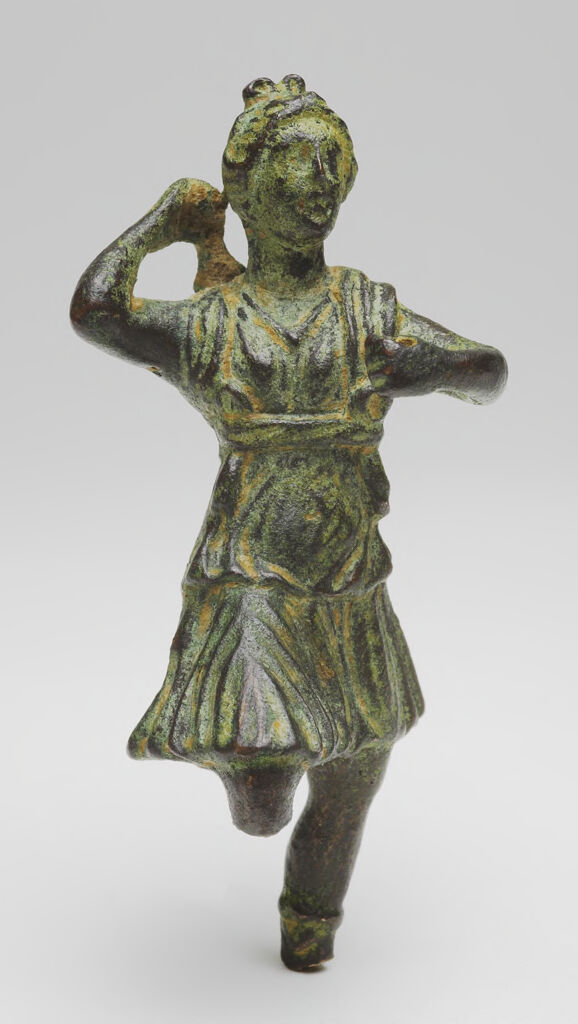Lorem ipsum dolor sit amet, consectetur adipiscing elit. Morbi eu nulla vehicula, sagittis tortor id, fermentum nunc. Donec gravida mi a condimentum rutrum. Praesent aliquet pellentesque nisi.


The surface patina is black with green in the crevices. There is convincing evidence of long-term burial—the green appears to have grown on top of a dark layer, which is resinous in appearance. The legs are broken and lost. The breaks have a rough texture indicative of brittle fractures, and it is not likely that the legs were lost as the result of flaws from the casting process. The breaks are worn and appear old, although not necessarily ancient.
The statuette is a solid cast with a slight depression under the dress. The details of the relief decoration are soft and were probably produced entirely when casting the wax model in a mold. The large hole in the left hand to accommodate the bow appears to have been cast.
The goddess Diana (Artemis) is shown as a huntress. She strides forward onto her right leg, which is missing below the knee. Her left leg, preserved only to the top of her boot, holds her weight and is slightly bent. Her left arm is bent over her chest, and her left hand is pierced to hold her bow, which was made separately and is missing. She reaches back with her right arm to draw an arrow from the quiver on her back. Her bare arms are tubular, with no modeling of the muscles. She wears a short chiton with a cloak held in a roll around her waist. The ends of the cloak are tucked up in pouch-like folds.
Her head is slightly raised, and her eyes are wide open as she prepares to take aim. Her hair is parted in the center, and two locks are twisted into a topknot in front, with rolls of hair fraiming her face and a bun at the back of her head. The statuette is modeled fully in the round. The coiffure, stance, and clothing relate this piece to the cult image of Diana Nemorensis (Diana of the Woods) from the sanctuary of the goddess at Nemi (Ariccia), which dates from the second phase of the sanctuary in the mid-first century BCE. The sanctuary seems to have been active until the mid-second century CE (1). Diana was the goddess of the hunt and protectress of the woods as well as women, especially in childbirth. Images of her are found in sanctuaries and domestic and commercial contexts. It is difficult to date these figures, which were mass-produced over a long period of time. The votive bronze images of Diana found at Nemi are dated from the third to first centuries BCE (2), but the Harvard piece also resembles the image of Diana on a terracotta relief created during the Antonine phase of the courtyard of the Caseggiato di Diana at Ostia that could date from the first to the early second centuries CE (3).
Fogg Art Museum, Harvard